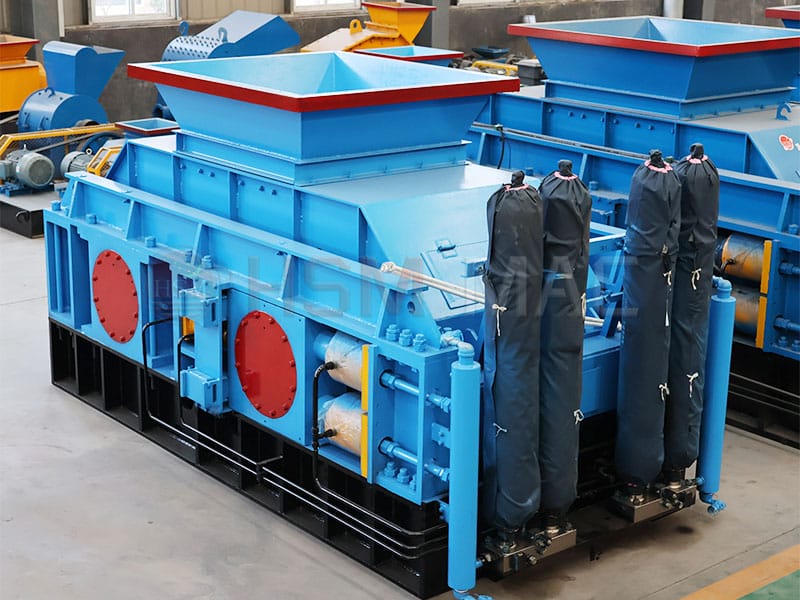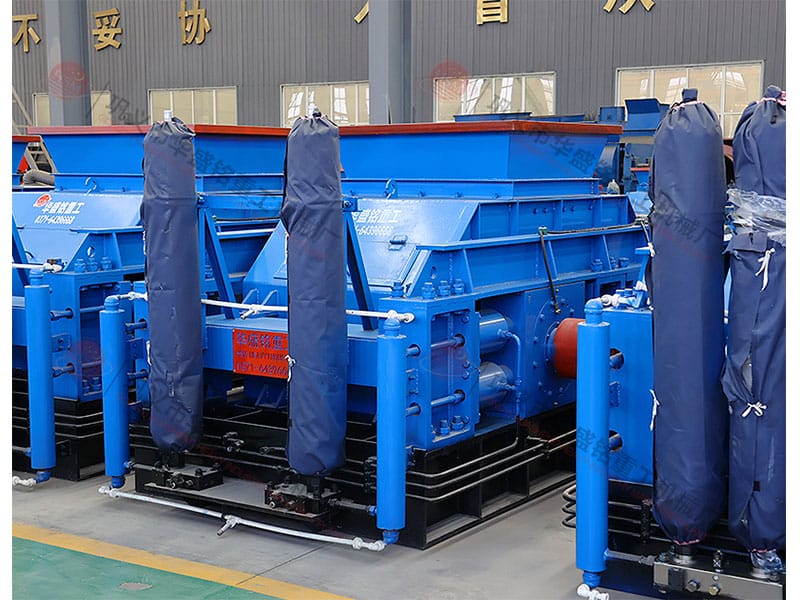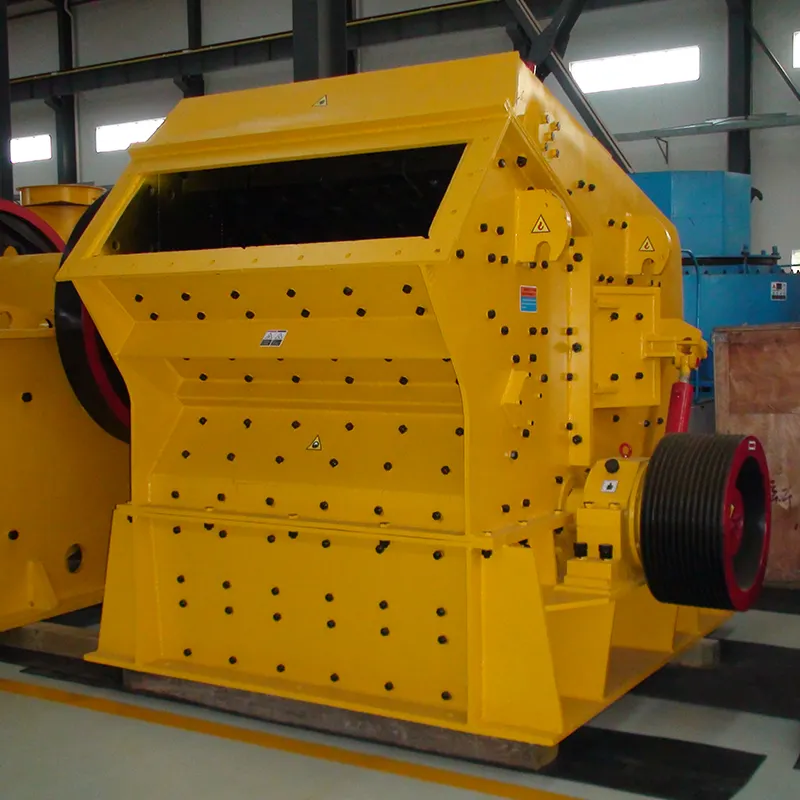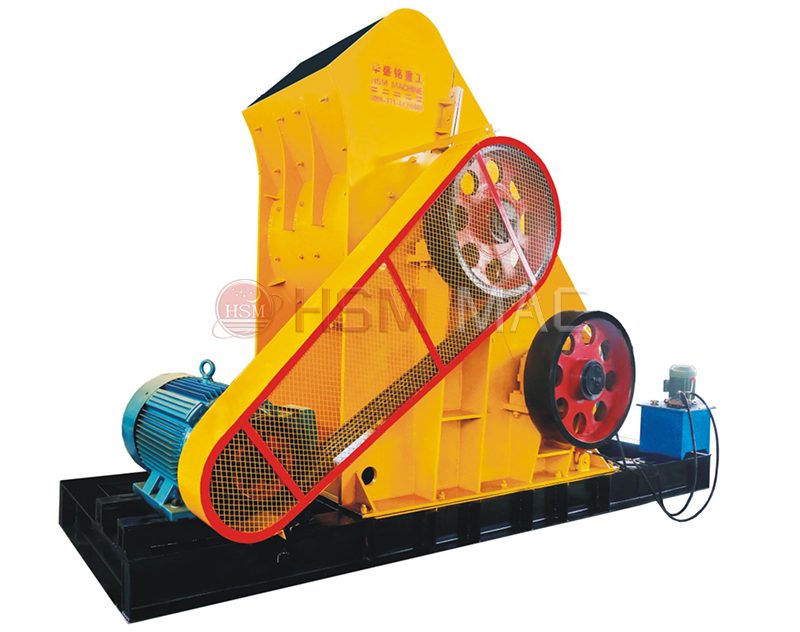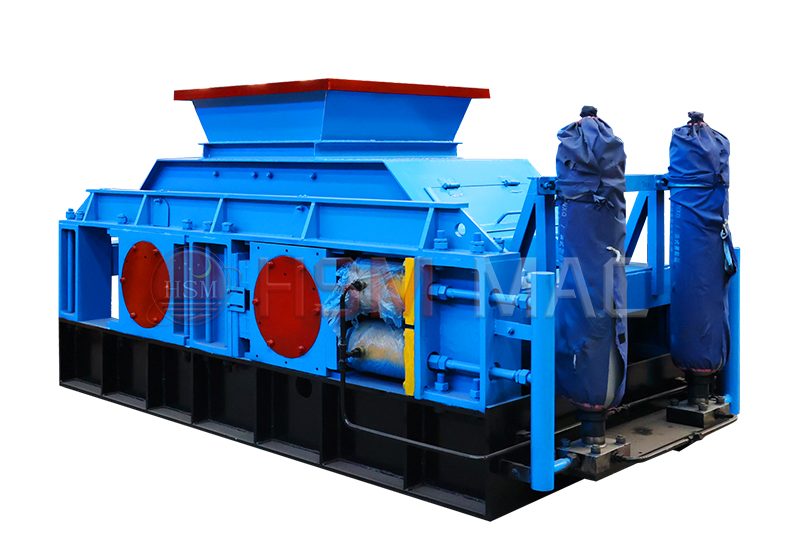
The large double roll crusher, an indispensable heavy-duty equipment in fields such as mining. Construction, and chemicals, plays a crucial role in material processing with its formidable crushing capability and high operational efficiency. It primarily consists of two large, parallel, and counter-rotating hard alloy rollers that exert combined forces of compression. And shearing to powerfully crush various hard rocks, minerals, cement clinker, and other bulky solid materials.
Firstly, the design philosophy of the large double roll crusher emphasizes structural robustness and durability. The machine body is fabricated from premium steel through either integral casting or welding, endowing it with high strength. And excellent stability to withstand the impacts and vibrations associated with prolonged high-load operation. The core component—rollers—are made from a special alloy material characterized by high hardness and wear resistance. Their surfaces undergo meticulous machining and hardening treatments, ensuring they maintain superior anti-wear properties when in contact with hard materials, thereby extending their service life.
Secondly, the large double roll crusher boasts exceptional crushing performance and wide applicability. Its dual-roller configuration allows for precise control of the discharge particle size by adjusting the gap between the rollers, catering to diverse particle size requirements across different production processes. Whether dealing with extremely hard rocks like granite and basalt, medium-hard materials like limestone and gypsum, or more brittle substances like coal gangue and shale, this equipment efficiently crushes them all, yielding uniformly sized products that facilitate subsequent processing and enhance resource utilization value.
In summary, the large double roll crusher, with its sturdy structure, superior crushing attributes, broad material adaptability, and efficient maintenance characteristics, has become the preferred choice for numerous industries engaging in large-scale material crushing operations. It serves as a strong underpinning for improving resource efficiency, reducing production costs, and driving industrial upgrading.










